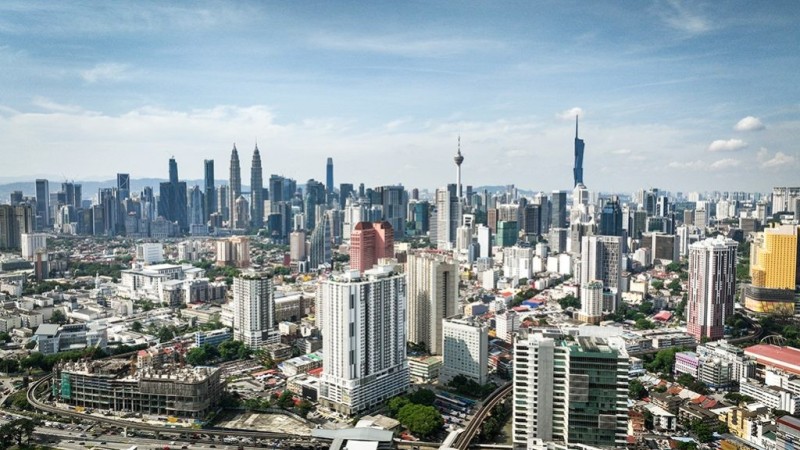
MALAYSIA’S economy recorded a stronger growth of 5.1% last year (2023: 3.6%), supported by continued expansion in domestic demand and a recovery in exports, according to Bank Negara Malaysia (BNM).
This uptick is driven by stronger household spending, reflecting favourable labour market conditions, policy measures to support households, and a solid household financial position.
According to the Department of Statistics Malaysia, the country’s economy is expected to remain robust this year, driven by a thriving labour market, increased exports in the electrical and electronics (E&E) sector, and the implementation of key investment initiatives.
“With resilient consumer demand, strategic investments, and international networks, Malaysia is on the right track for positive economic prospects in 2025, despite external market uncertainties,” the report stated.
Sectors powering Malaysia’s growth
Malaysia’s economic advancement is supported by four major pillars, namely services, manufacturing, palm oil, and oil and gas (O&G), which together drive national output, job creation, and industrial innovation.
These sectors have consistently served as prime movers of GDP expansion, employment creation, and technological innovation, consolidating the country’s reputation for stability and adaptability.
The services sector recorded total revenue of RM2.4 trillion in 2024, a 6.3% increase from RM2.3 trillion in 2023.
This growth was largely driven by the continued recovery of tourism-related industries, supported by the arrival of 25 million international tourists and an increase in domestic travel activity.
The wholesale and retail trade, food and beverage, and accommodation segments remained the main contributors to this sector, buoyed by sustained consumer demand and rising tourism activity.
As Malaysia moves forward, the services sector remains a key pillar of economic growth, supported by strong consumer spending, digital transformation, and increased investment in infrastructure and technology.
Ongoing efforts in tourism development, digital innovation, and business expansion will be crucial in maintaining the sector’s positive momentum and strengthening Malaysia’s position as a regional economic hub.
Meanwhile, the manufacturing sector continues to play a pivotal role in Malaysia’s economy, with contributions spanning chemicals, automotive, and the electrical and electronics (E&E) subsector.
The sector’s total sales value reached RM1.9 trillion in 2024, marking a 4.6% increase from 2023.
In that year, the number of employees grew by 1.0% (2023: 1.7%) to 2.40 million, while wages and salaries increased by 1.5% (2023: 3.5%) to RM99.3 billion.
With nearly 30 automotive manufacturers and over 600 component producers, Malaysia’s automotive industry is one of the largest in Asia. It contributes approximately RM40 billion to GDP each year, with Proton and Perodua being the leading domestic brands.
Moreover, the chemical subsector is projected to contribute RM40 billion to GDP by the end of this decade, bolstered by improved industry integration, global competitiveness, and sustainable production, as noted by Investment, Trade and Industry Minister Tengku Datuk Seri Zafrul Abdul Aziz.
At the same time, the E&E industry serves as the backbone of Malaysia’s manufacturing sector. The sector is expected to contribute RM120 billion to GDP and RM495 billion in export revenue by 2025, positioning Malaysia as a key player in Southeast Asia’s E&E market.
Palm oil remains a major contributor to Malaysia’s economy and global trade. Last year, Malaysia was the world’s second-largest exporter of oils and fats, having exported 16.9 million tonnes of palm oil, accounting for 17.2% of global oil and fat exports.
The nation’s palm oil export revenue totalled RM109.33 billion in 2024, marking a 15.1% increase from 2023.
As one of the country’s key agricultural commodities, palm oil continues to support rural economies and smallholder livelihoods, while positioning Malaysia as a global leader in sustainable palm oil production.
The industry is also increasingly aligning with international sustainability benchmarks to maintain its competitiveness in the global market.
Finally, Malaysia’s O&G sector remains a cornerstone of national economic strength for over a century, beginning with the first oil discovery in Miri in 1910.
Petronas, the country’s national oil company, leads the industry, collaborating with global energy giants such as ExxonMobil, Hess Corporation, PTT Exploration and Production Public Co Ltd, and EnQuest.
In 2024, Malaysia’s crude oil and condensate production totalled 181.6 million barrels, while natural gas production reached 2,948.8 billion cubic feet, according to the Petroleum and Natural Gas Mining Statistics for Q4 2024.
The O&G sector contributes approximately RM300 billion to the national economy and has remained resilient despite fluctuations in global oil prices.
This industry plays a vital role not only in national economic growth but also in state-level development, especially in Sarawak, Sabah, Terengganu, and Johor, where Petronas’ investments in local vendor training and infrastructure have significantly benefited communities.
A unified national vision
Fundamentally, Malaysia’s trajectory of inclusive development hinges on collaboration between federal and state governments, ensuring that each region shares in the nation’s prosperity.
While oil is primarily extracted offshore in select states, even non-producing states benefit from national revenues.
For instance, Penang and Selangor harness their strengths in manufacturing, while Sabah, Sarawak, and Johor serve as the largest palm oil producers.
This interdependent framework, in which natural wealth and industrial competencies are holistically channelled towards collective advancement, has laid the foundation for the country’s economic resilience.
Additionally, national policies supporting infrastructure, education, and digital innovation continue to elevate Malaysia’s competitiveness and attractiveness to foreign investors.
From palm oil plantations to high-tech E&E factories, from financial services to energy production, each industry contributes to Malaysia’s long-term economic growth.
As the economy advances, ongoing policy reforms and strategic investments must continue addressing both current economic challenges and emerging global trends, ensuring that Malaysia remains a strong, diversified, and forward-looking economy.
By fortifying its foundational pillars and reinforcing regional collaboration, Malaysia signals its readiness to navigate shifts in global demand, climate challenges, and technological advancements, securing its place as a dynamic, broad-based economy focused on shared prosperity for all Malaysians.
Source: https://themalaysianreserve.com/2025/03/17/the-pillars-powering-malaysias-economic-surge/

